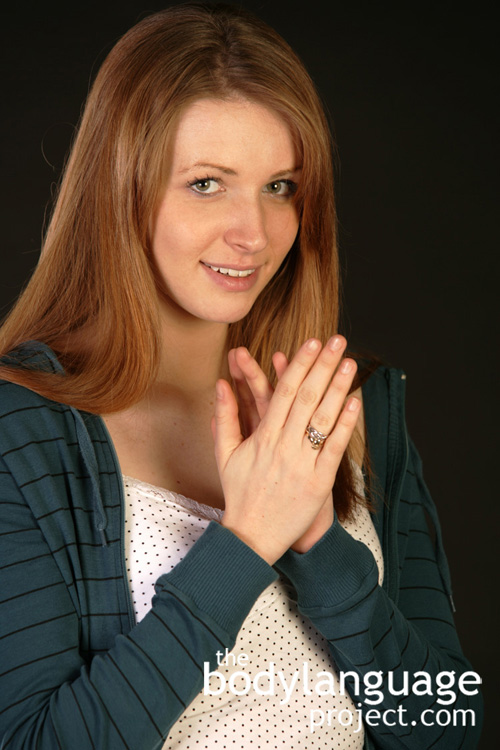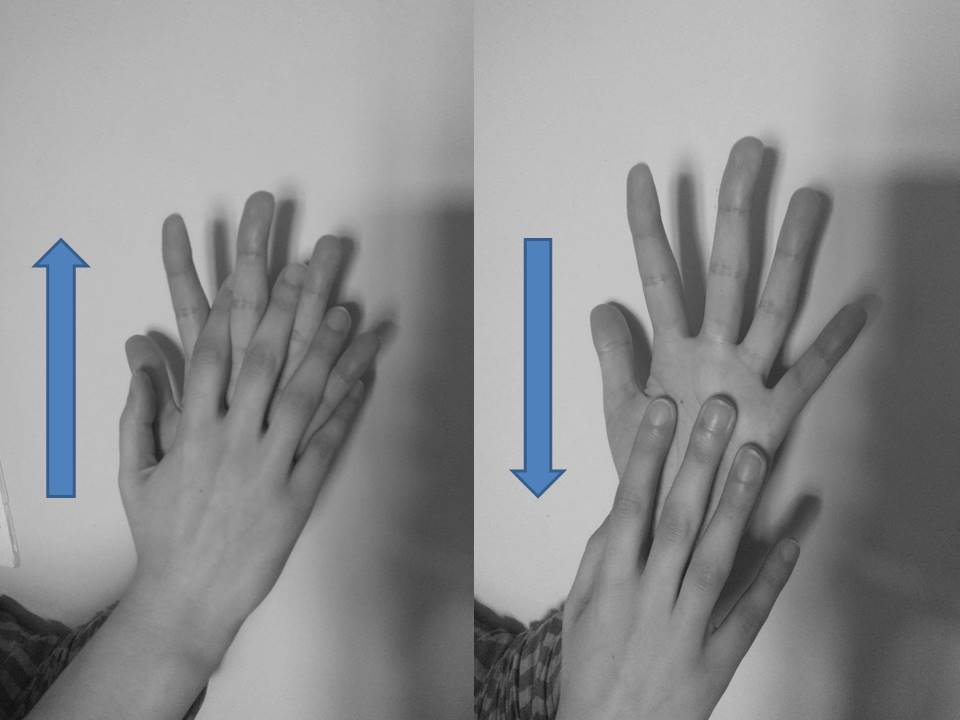Rubbing Hands Body Language
If you’ve ever wondered about the secrets behind how people communicate without saying a word, you’ve come to the right place. Today, we’re diving into the fascinating world of body language, specifically the intriguing gesture of rubbing hands.
Imagine this: You find yourself in a situation where someone is rubbing their hands together. What could it mean? Is it a sign of excitement, nervousness, or something else entirely? Let’s explore the various interpretations of this intriguing body language gesture.
So, grab a seat, get ready to unravel the mysteries of nonverbal communication, and join me on this fascinating journey into the world of rubbing hands body language. Let’s begin!
Rubbing your hands, also known as a common body language gesture, can communicate various meanings. It can indicate excitement, anticipation, or even anxiety. This gesture is often associated with the expectation of something positive or the need to comfort oneself. Pay attention to the context, other gestures, and facial expressions to better understand the underlying message. Understanding body language can be an invaluable skill in interpersonal communication.

Rubbing Hands Body Language: Decoding the Hidden Messages
Body language is often considered a powerful form of communication that can reveal insights into a person’s thoughts and emotions. Among the various gestures and movements, rubbing hands is a fascinating nonverbal cue that holds significant meaning. Whether it’s a nervous habit, a sign of anticipation, or a signal of excitement, the act of rubbing hands can convey a range of emotions and intentions. In this article, we will delve into the intricacies of rubbing hands body language, exploring its interpretations, and uncovering the hidden messages behind this common gesture.
The Meaning Behind Rubbing Hands Body Language
The act of rubbing hands can have different meanings depending on the context and accompanying cues. In many cases, it is associated with anticipation and eagerness. For example, when someone is excited about a forthcoming event or anticipating positive news, they might subconsciously rub their hands together. This gesture signifies the anticipation of something positive or the build-up of energy in anticipation of taking action.
In other instances, rubbing hands can be a form of self-soothing or comforting behavior. Individuals may engage in this gesture when feeling anxious or nervous, as it helps to calm their nerves and provide a sense of relief. It is their way of self-regulating their emotions and reducing the tension they are experiencing. This rubbing motion can bring a sense of grounding and reassurance in times of stress.
Additionally, rubbing hands can also indicate a hidden desire for something, symbolizing a person’s eagerness for a particular outcome or object. Whether it’s a business deal, a competitive sport, or a personal achievement, this body language can demonstrate a person’s subconscious desire and ambition.
Interpreting the Rubbing Hands Gesture in Different Contexts
In a professional setting, rubbing hands can convey enthusiasm, determination, and a proactive attitude. It often signifies a person who is eager to get to work, ready to take on challenges, and motivated to achieve their goals. It can be particularly observed during job interviews, meetings, or presentations when individuals are showcasing their drive and excitement for the opportunity.
In social situations, the rubbing hands gesture can indicate anticipation and excitement. It may suggest an individual’s enthusiasm for an upcoming event, such as a party, a vacation, or a celebration. When coupled with a smile or other positive facial expressions, it can communicate a person’s joy and anticipation of enjoyable experiences ahead.
However, it’s important to note that interpreting body language should not rely solely on a single gesture. It should be considered alongside other verbal and nonverbal cues to accurately understand a person’s intentions and emotions. Context, cultural differences, and individual personality traits play a significant role in decoding body language, including the rubbing hands gesture. Therefore, it is essential to observe the overall behavior and take into account the specific circumstances.
Why Do People Rub Their Hands? Exploring Possible Reasons
Rubbing hands is a nonverbal behavior that has been observed across different cultures and contexts. While the meaning behind this gesture can vary, there are several common reasons why people engage in this action. Here are three key explanations:
1. Nervousness and Anxiety
One of the primary reasons people rub their hands is to alleviate nervousness and anxiety. When faced with stressful or intimidating situations, such as public speaking or important meetings, individuals may subconsciously rub their hands together as a self-soothing mechanism. The rubbing motion helps to release tension and provide a momentary sense of comfort, allowing them to manage their anxiety and regain composure.
2. Anticipation and Excitement
Rubbing hands is often associated with anticipation and excitement. When individuals are eagerly looking forward to something, whether it’s a positive outcome, an event, or a new opportunity, they may display this gesture. The act of rubbing hands together signifies the buildup of energy and the anticipation of positive experiences, keeping the individual engaged and alert.
3. Ambient Temperature
Another reason for rubbing hands can be related to the ambient temperature. In colder environments or during chilly weather, individuals may rub their hands together to generate heat and warmth. The friction produced by rubbing creates a temporary sense of warmth and can help keep the hands comfortable in cold conditions.
Tips for Decoding Rubbing Hands Body Language
When trying to interpret the meaning behind rubbing hands body language, it is crucial to consider various factors and observe the overall context. Here are some tips to help you decode this nonverbal gesture:
- Observe other accompanying cues: Pay attention to facial expressions, body posture, and other gestures that may provide additional insights into a person’s emotions and intentions.
- Consider cultural differences: Be mindful of cultural variations in interpreting body language to avoid misinterpretations.
- Look for patterns: Notice if rubbing hands consistently occurs in specific situations or contexts, as it can provide clues about the individual’s behavioral patterns and preferences.
- Consider individual differences: Remember that each person is unique, and their body language may vary based on their personality, habits, and past experiences.
The Power of Nonverbal Communication
Understanding body language, such as the rubbing hands gesture, can help us gain a deeper understanding of the thoughts, emotions, and intentions of others. By paying attention to nonverbal cues and observing the context, we can enhance our communication skills and build stronger connections with those around us. Remember, body language is a powerful tool, and decoding its hidden messages can empower us with invaluable insights into human behavior.
Key Takeaways: Rubbing Hands Body Language
- When someone rubs their hands together, it can indicate excitement or anticipation.
- This body language gesture is often associated with positive emotions or a desire for something.
- Rubbing hands can also be a self-soothing gesture when someone is anxious or nervous.
- Pay attention to other accompanying cues to accurately interpret the meaning of hand rubbing.
- Understanding body language can help in better communication and building stronger relationships.
Frequently Asked Questions
Here are some frequently asked questions about the body language of rubbing hands:
1. Why do people rub their hands together?
People often rub their hands together as a way to express excitement or anticipation. It can happen when someone is looking forward to something positive, like receiving good news, being praised, or anticipating a favorable outcome. Rubbing hands can also be a sign of confidence, as it helps release nervous energy and provides a sense of comfort.
However, it’s important to consider other contextual cues when interpreting this body language. For example, if someone rubs their hands while avoiding eye contact or showing signs of anxiety, it may indicate discomfort or uneasiness.
2. What does it mean when someone rubs their hands together briskly?
When someone rubs their hands together briskly, it typically indicates a heightened sense of excitement or eagerness. This rapid hand rubbing gesture can be associated with positive anticipation, similar to an enthusiastic “let’s get started” attitude. It may happen when someone is about to embark on a new project, receive exciting news, or engage in a thrilling activity.
While this body language generally signals positive emotions, it’s essential to consider other nonverbal cues and the overall context to accurately interpret someone’s state of mind.
3. Is rubbing hands together always a sign of positive body language?
Rubbing hands together is generally associated with positive emotions such as excitement, enthusiasm, or anticipation. However, it’s essential to be mindful of other nonverbal cues and underlying context to accurately interpret someone’s body language.
In certain situations, rubbing hands together can also be a sign of anxiety or nervousness. If someone is rubbing their hands while showing signs of discomfort, avoiding eye contact, or displaying other anxious behaviors, it may indicate uneasiness or stress. It’s crucial to assess the overall situation and consider other nonverbal cues when interpreting this body language.
4. Are there cultural differences in the interpretation of rubbing hands together?
Yes, the interpretation of rubbing hands together can vary across different cultures. In some cultures, hand rubbing may be seen as a gesture of excitement or positive anticipation, while in others, it may have different meanings. It’s essential to consider cultural context and other nonverbal cues when interpreting body language.
For example, in some cultures, hand rubbing can also indicate a desire for warmth or a physical gesture to comfort oneself during cold weather. Understanding cultural norms and practices is crucial for accurate interpretation of body language, including hand rubbing.
5. How can I use rubbing hands body language to my advantage?
Using rubbing hands body language strategically can help you convey enthusiasm, confidence, and positive anticipation. Consider using this gesture when you want to show excitement about a project, express your eagerness for a positive outcome, or indicate your confidence in a situation.
However, it’s important to be authentic in your body language and consider the overall context. Forced or exaggerated hand rubbing may come across as insincere or deceptive. It’s also essential to be aware of cultural differences and adjust your behavior accordingly to ensure effective communication.

RUBBING OF PALMS! [Part-64] (Body Language Full Course)
Summary:
Rubbing your hands can signal excitement, anticipation, or a desire to feel warmer. People often rub their hands together when they are about to receive something they want or when they are feeling nervous or anxious. It is a subconscious body language gesture that can provide insight into someone’s emotions and intentions.
Additionally, hand-rubbing can also indicate confidence, as it is a way for individuals to psych themselves up before a challenging task. However, it is important to consider other cues and the context to accurately interpret this body language. By understanding the meaning behind hand-rubbing, we can better understand the emotions and intentions of those around us.